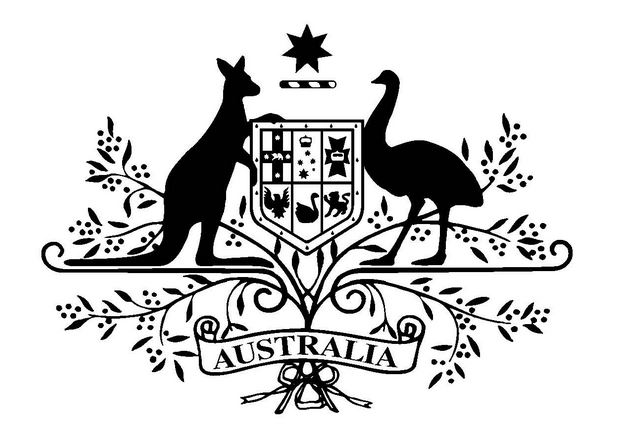
 NBN Co has released its updated 2016 Corporate Plan showing the company is on track to deliver high-speed broadband to all Australian homes and businesses by 2020.
NBN Co has released its updated 2016 Corporate Plan showing the company is on track to deliver high-speed broadband to all Australian homes and businesses by 2020.
About one in ten Australians can currently get the NBN, but by June 2018 about 75 per cent will have access to high-speed broadband over the network.
Under the current Government the performance of NBN Co, the company rolling out the network, has been significantly improved. In September 2013, fewer than two per cent of premises could obtain a service on the NBN.
The 2016 Corporate Plan shows the size of the rollout footprint will almost double every year for the next three years, with more than 2.6 million premises ‘ready for service’ by the end of June 2016.
Last year, the Government identified around 1.6 million premises in Australia which had either very poor or no broadband connectivity. These premises have been and will continue to be prioritised in the NBN rollout.
As part of this ramp-up, NBN Co will invest in one of the telecoms industry’s biggest ever training schemes, educating and reskilling 4,500 workers as the company seeks to double its construction workforce.
Multi-technology mix still delivers overwhelming benefits
The Corporate Plan shows that the multi-technology mix remains the most cost- and time-efficient means of completing the NBN, delivering upgrades six to eight years sooner and at around $30 billion less cost than an all-fibre to the premises (FTTP) alternative.
The Government’s broadband policy is technology agnostic. NBN Co is free to use whatever mix of technologies is required to get the job done as quickly and cost-effectively as possible. The company therefore has, in the light of its extensive experience building FTTP, determined what the peak funding requirement and time to complete would be for an all-FTTP build.
The company’s conclusion is that an all-FTTP approach, as proposed by Labour, would have a peak funding requirement of $74 billion to $84 billion and would not be finished until as late as 2028.
The company’s MTM approach as set out in the Corporate Plan will see the network completed by 2020 with a peak funding requirement of between $46 billion and $56 billion with a base case of $49 billion.
In other words, an all-FTTP approach would mean that many Australians waiting impatiently for upgrades would have to wait for a decade or more to get an NBN service.
Under the current plan the entire project will be complete by 2020 with 9.1 million premises ‘ready for service’ within three years from today.
Significant risks remain
As Communications Minister Malcolm Turnbull has previously stated, the NBN is still the biggest and most complex infrastructure project in Australian history1.
While NBN Co’s annual results show the company has met its financial and deployment targets for the financial year and has made inroads in managing the risks of the project, its risk profile is still significant.
This is the largest and most complex infrastructure project ever undertaken in Australia.
The company has modelled a range of possible scenarios that, if they were to eventuate, would add $1 billion to its overall peak funding requirement, including:
- Failing to meet the company’s take-up target in the fixed-line footprint by around five per cent.
- A seven month delay in either its fibre to the node (FTTN) or hybrid fibre-coaxial (HFC) product launch.
- A failure to meet its target increase in the average revenue per user by $3.
Peak funding requirement
Reflecting this uncertainty, NBN Co’s management has expressed peak funding in a range, from $46 billion to $56 billion, with a base case of $49 billion. This includes a $4.6 billion contingency.
This represents a change to the company’s December 2013 Strategic Review peak funding forecast of $41 billion, reflecting:
- For the first time in the history of the project, the company is in a position to accurately account for construction costs. For example, in 2013 the previous management of the NBN published an actual average cost of $2,200 to $2,500 to connect each premises via FTTP. The average cost to connect FTTP was never $2,200 to $2,500 – not then and not now2. The average cost has been over time fairly consistent. As at 30 June, the actual cost was $3,632 in direct capex and $4,387 including lease costs (see accompanying blog).
- A May 2014 Strategic Review into the Fixed Wireless and Satellite programs3 found that the company’s previous corporate plans underestimated the needs of rural and regional Australia and without substantial additional investment would not be able to provide services to around 200,000 premises.
- Increased headcount and work associated with activations and assurance.
The costs of connecting premises via each technology have remained steady over the past 12 months. The Government’s equity contribution is assumed to remain $29.5 billion.
Next steps
In coming months, NBN Co will reach a number of significant milestones, including the launch of its FTTN product and the launch of ‘Sky Muster’, the first of its two next-generation satellites.
The Government remains committed to completing the network as quickly as possible and at a lower cost to taxpayers.
The planning process undertaken by the company to produce the 2016 Plan was the most comprehensive to date and confirms that the company has made substantial progress in getting the network rollout on track.
The 2016 Plan and the 2014-15 Annual Report are available on the company’s website at: www.nbnco.com.au
1 See for instance:
www.minister.communications.gov.au/malcolm_turnbull/speeches/afr_infrastructure_summit#.VdaECY2KApE
2 It has since become clear that the company’s cost accounting was most inadequate as at 2013 and it has taken the new CFO, Mr Stephen Rue, who joined NBN Co on 1 July 2014 some time to establish an accurate cost accounting system.
3 www.nbnco.com.au/content/dam/nbnco/documents/nbnco-fixed-wireless-and-satellite-review-07052014.pdf




